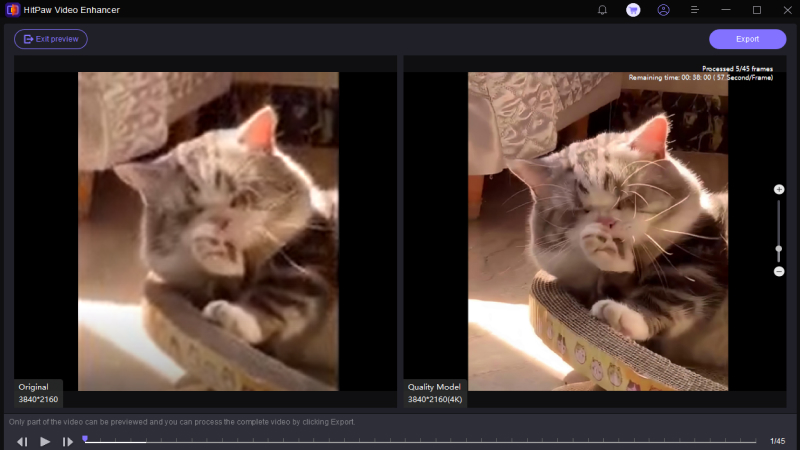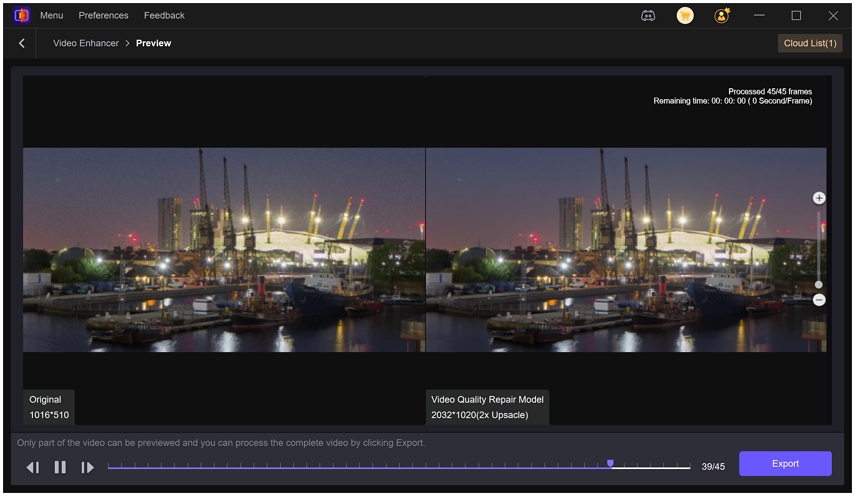LTX-2: The First Complete Open-Source AI Video Foundation Model for Native 4K
LTX-2 is a major step forward for generative video and audio. Built by Lightricks, it combines synchronized audio and video generation, production-ready controls, and a commitment to openness that makes core tooling available to the community. The model targets creators and studios who want cinematic fidelity without resorting to piecemeal upscaling, promising fast, efficient generation on accessible hardware and clear hooks for research and integration.
Part 1. What is LTX-2: Core Features, Flows and Specifications
LTX-2 is an open-source video foundation model designed to generate both moving images and matching audio in a single coherent pass. Unlike many earlier systems that required separate audio pipelines or heavy post-processing to reach high resolution, LTX-2 focuses on speed, efficiency, and fidelity while keeping core components and inference tooling available for developers and researchers. The architecture emphasizes production readiness with features that support long-form clips, frame-level controls, and multimodal conditioning.

1. What's New in LTX-2: Six Advances in One Model?
Synchronized audio and video generation: Visuals and sound are produced together so motion, dialogue, ambience, and music align naturally in timing and rhythm.
Native 4K fidelity at high frame rates: LTX-2 targets native 4K output at high frame rates (up to 50 fps), enabling cinematic-quality short clips without stitching multiple outputs.
- Efficiency and scale: The model is engineered to reduce compute costs compared with competitors, using a multi-GPU inference stack to enable longer, higher-fidelity generations.
- Runs on consumer hardware: While optimized for multi-GPU setups, LTX-2's performance profile makes it feasible to run on powerful consumer GPUs, democratizing access to pro-level AI video.
- Precision creative controls: Frame-level conditioning, multi-keyframe logic, 3D camera controls, and LoRA-style fine-tuning let creators hold tight artistic control over motion, style, and continuity.
- Open-source collaboration: Core components, datasets, and inference tooling are publicly available on GitHub; model weights and expanded tooling are scheduled for later releases to support community-driven research and productization.
2. LTX-2 Three Flows for Every Creative Need
LTX-2 ships with performance "flows" aimed at different stages of production:
- LTX-2 Fast: Extremely responsive mode for rapid iteration, storyboarding, and previews; optimized for low latency and cost-effective experimentation.
- LTX-2 Pro: Balanced quality and efficiency for day-to-day production and marketing content; the default for polished work.
- LTX-2 Ultra: Highest-fidelity mode for cinematic and VFX-grade output, targeting native 4K at high frame rates and longer sequences.
These flows also map to transparent studio pricing and credit systems so teams can choose a cost-quality tradeoff that matches their workflow.
3. LTX-2 Technical Specifications uilt for Professionals
- Modes: Text-to-video and image-to-video generation.
- Duration: Options for 6, 8, or 10 second shots now, with longer 15 second support coming soon.
- Resolutions: FHD (1080p), QHD (1440p), UHD (2160p / native 4K), with HD 720p planned.
- Audio: Synchronized audio on/off toggle to generate audio-visual clips or silent footage as needed.
- Aspect ratios: 16:9 available now; 9:16 and others on the roadmap.
Part 2. What is LTX-2 used for?
LTX-2 is designed for any creative or production workflow that benefits from fast, high-fidelity audio-visual generation. In post-production, it can generate 4K test plates and background footage that integrate into VFX pipelines. Animation and motion-graphics studios can use it for complex motion sequences and camera moves with frame-level control. Marketing teams and content producers can rapidly produce production-ready social clips and branded video at scale. Finally, it is a powerful playground for creative experimentation, enabling artists to iterate ideas and explore novel visual styles without long render queues.
- FX and post-production assets and test renders for editorial and VFX.
- Animation and motion graphics with controllable camera and timing.
- Content production for ads, social media, and short-form storytelling.
- Rapid prototyping and creative R&D for studios and researchers.
Part 3. How to use LTX Video to Generate Your Video?
You can begin generating with LTX Video by installing the released tooling, preparing prompts or reference images, configuring generation parameters, and exporting the final clip. The model aims to be accessible yet powerful, so even small teams can produce high-quality results with the right GPU and settings.
Step 1: Install LTX Video
Visit the official LTX Video GitHub or the LTX website to download the repository and installation packages. Follow the README for system requirements and setup; recommended hardware for high-fidelity output includes a high-end GPU such as an RTX 4090 or equivalent.
Step 2: Prepare your input
For text-to-video: write a clear, descriptive prompt that captures scene elements, motion, and mood. Example: "A serene alpine lake at sunrise, mist rising as a small boat drifts past, soft birdsong and distant bells".
For image-to-video: choose a high-quality image to animate; the model will add motion, lighting shifts, and parallax.
Step 3: Configure settings
Select resolution, clip duration, and frame rate. You can toggle synchronized audio on or off. Adjust camera motion, multi-keyframe conditioning, and fine-tuning parameters for consistency across frames.
Step 4: Generate video
Provide your prompt or image and run the generation. Fast and Pro flows are designed for quick iteration; Ultra targets the highest fidelity. Monitor GPU utilization and preview outputs as you iterate.

Step 5: Export and polish
Preview the result, then export in the desired format. For final polishing, you can import to standard NLE or VFX apps, or use specialized enhancers for upscaling, denoising, and color grading.
Further reading: Enhance your LTX-2 footage with HitPaw VikPea Video Enhancer
Generated clips often benefit from targeted sharpening, detail recovery, and noise reduction to meet delivery standards for broadcast or social platforms. A dedicated enhancer speeds polishing and helps achieve consistent color and clarity across multiple shots. If you plan to refine or upscale LTX-2 outputs, consider using HitPaw VikPea to polish details, reduce noise, and upscale to higher resolutions.
- AI-driven upscaling to 4K or 8K while preserving natural detail and edges.
- Advanced denoise model that removes grain without softening fine textures.
- Facial and portrait optimization for clearer skin tones and facial details.
- Motion-aware sharpening to keep moving objects crisp and artifact-free.
- Color enhancement tools that preserve dynamic range and avoid clipping.
- Batch processing and export presets for fast, consistent multi-clip workflows.
How to Polish LTX-2 Output Video with HitPaw VikPea
Step 1.Download and launch HitPaw VikPea. Open Video Enhancer and import your generated video or drag it into the workspace.

Step 2.Choose one of the AI models: General, Sharpen, Portrait, or Video Repair based on your clip's needs.

Step 3.Under export settings, select your target resolution (VikPea supports up to 4K or 8K upscaling). Use Preview to check results, then Export to save the polished file.

Frequently Asked Questions about LTX-2
Yes. Lightricks has released core components, datasets, and inference tooling on GitHub so researchers and developers can inspect and extend the system. Model weights and additional assets are scheduled for phased release later this fall to enable wider experimentation and customization.
API access is being rolled out via a preview program. Visit the official LTX site or Lightricks announcements to join the waitlist or apply for preview access. API access today typically includes REST and WebSocket endpoints for programmatic generation.
Yes. LTX-2 is designed with production workflows in mind and supports API-first integration patterns. The released tooling includes inference code and examples so you can connect LTX-2 to editors, render farms, or cloud pipelines via REST or WebSocket interfaces.
Fast prioritizes responsiveness and low cost per second for rapid previews, storyboarding, and ideation. Pro balances fidelity and efficiency for routine production tasks where polished output matters. Fast is ideal for iteration; Pro is the reliable default for daily content creation and marketing deliverables. Ultra targets the highest possible fidelity for final deliverables.
Conclusion
LTX-2 represents a major milestone in AI-driven video and audio generation: an open-source, production-minded foundation model that brings synchronized audio, native 4K fidelity, and professional controls to creators at scale. Whether you are an independent creator, a studio engineer, or an R&D researcher, LTX-2 opens new possibilities for storytelling and rapid production. Pairing generated output with post tools such as HitPaw VikPea Video Enhancer can help you polish clips to delivery-ready quality. To stay current, follow the official LTX repositories and the Lightricks announcements for API previews, tooling updates, and the upcoming full weights release.
Leave a Comment
Create your review for HitPaw articles












